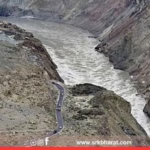As cities across the world grapple with ageing water infrastructure, pipeline leaks, frequent outages, and rising urban demand, the debate around decentralised water systems has intensified. Water experts argue that decentralised systems could complement traditional centralised networks to ensure reliable, sustainable, and equitable access to water.
What are decentralised water systems?
Decentralised water systems refer to small-scale, localised water supply, treatment, and recycling units that operate close to the point of use. Unlike centralised systems that depend on large treatment plants and vast distribution networks, decentralised solutions include:
- Localised rainwater harvesting structures
- Community-level water treatment units
- Household greywater recycling systems
- Small desalination units for coastal villages
Why the urgent need?
According to recent urban utility surveys, over 35-40% of treated water is lost through leakages in ageing pipelines before it reaches households. This non-revenue water loss is combined with:
- Bursting of old pipes
- Contamination risks due to cross leaks
- Disruption during repairs, affecting entire city sectors
- High capital costs to replace large underground pipelines
These issues are compounded by climate change-induced stresses such as erratic rainfall, droughts, and flooding, requiring resilient local solutions.
Key advantages of decentralised water systems
- Reduced transmission losses
Treating and distributing water closer to users minimises pipeline losses. - Lower capital expenditure
Setting up modular decentralised units costs less than building new large-scale plants and network expansions. - Quick deployment and scalability
Local systems can be installed faster, with customisation for peri-urban or informal settlements. - Enhanced climate resilience
Communities can maintain water supply during natural disasters or infrastructure failures. - Promotes water conservation and reuse
Systems like household greywater recycling reduce freshwater consumption.
Examples from India and the world
| Location | Decentralised Solution | Impact |
|---|---|---|
| Bengaluru apartments | Rooftop rainwater harvesting + STP reuse | Saved up to 40% of municipal water demand |
| Chennai | Recharge wells in community parks | Increased local groundwater table, reduced tanker dependence |
| Singapore | NEWater recycled plants (decentralised + central) | Supplies up to 40% of water needs, highly reliable |
| California, USA | Building-scale greywater reuse systems | Reduces potable water use by 25-30% in drought-prone areas |
| Tokyo, Japan | Emergency decentralised water tanks in public areas | Ensures supply during earthquakes or network disruptions |
Challenges in adoption
- Regulatory hurdles
Building codes and utility regulations often mandate centralised connections, limiting innovation. - Quality and safety standards
Ensuring treated water quality from decentralised systems meets public health standards requires monitoring. - Public awareness and behavioural change
Adoption depends on citizen participation in maintenance and usage adjustments. - Integration with existing infrastructure
Designing hybrid models combining centralised and decentralised systems without duplication or contamination risks. - Funding and scalability models
Banks and governments are yet to create standard financing products for decentralised water projects, unlike energy.
Policy shifts underway
India’s Jal Jeevan Mission encourages decentralised water storage and treatment units in rural areas to ensure tap water to every household. States like Maharashtra, Rajasthan, and Karnataka are also mandating rainwater harvesting and decentralised treatment in new urban projects.
Globally, the UN Water Action Decade goals (2018-2028) identify decentralised solutions as critical for achieving universal safe water access under SDG 6.
Expert perspectives
Dr Priya Menon, urban water resilience expert, notes:
“Decentralised systems are not replacements but essential complements to centralised infrastructure, especially as cities outgrow ageing networks faster than governments can replace them.”
Ravi Kumar, infrastructure policy consultant, cautions:
“Regulatory clarity is key. Without clear standards, we risk decentralised systems failing due to poor maintenance or legal hurdles, defeating their purpose.”
Technological innovations driving decentralised water solutions
Recent innovations have made decentralised systems more viable:
- Compact membrane bioreactors (MBR) for wastewater recycling in apartments
- IoT-based water quality sensors for real-time monitoring
- AI-powered groundwater recharge modelling for optimal placement of recharge wells
- Solar-powered desalination units for remote coastal villages
- Plug-and-play container water treatment units for disaster relief or temporary urban settlements
Comparative overview: Centralised vs decentralised water systems
| Parameter | Centralised | Decentralised |
|---|---|---|
| Setup cost | High (₹1000 crore+ for large cities) | Low to medium (₹1 lakh to ₹10 crore per unit) |
| Maintenance | Complex, requires central agencies | Easier, often community-managed |
| Scalability | Slow, multi-year projects | Quick, modular expansions possible |
| Resilience | Vulnerable to single-point failure | Distributed, continues during localised failures |
| Water loss | High pipeline losses | Minimal transmission loss |
Way forward for Indian cities
Experts recommend a hybrid model where centralised systems ensure base supply, complemented by:
- Mandatory rainwater harvesting in all buildings
- Greywater recycling units in large societies and hotels
- Community treatment plants for informal settlements
- Recharge structures in parks, lakes, and roadside drains
- Rooftop or small-scale solar desalination in coastal water-stressed districts
Such an approach reduces stress on overburdened central pipelines, improves groundwater recharge, and enhances sustainability.
Economic and social benefits
If implemented widely, decentralised systems can:
- Save up to 30-40% of municipal water demand
- Reduce urban flooding through increased stormwater capture
- Generate local maintenance jobs for plumbers, treatment plant operators, and technicians
- Empower communities with greater control over their water security
Conclusion
While centralised water networks will remain the backbone of urban supply, decentralised systems offer a resilient, cost-effective, and climate-smart supplement to tackle ageing infrastructure, water scarcity, and growing urban demand. Policy, finance, and public awareness reforms will be critical to unlock their full potential, ensuring every household has reliable and sustainable access to water in the decades ahead.
Disclaimer: This article is for general information based on policy discussions, infrastructure data, and expert opinions. Readers are advised to follow official urban water policy announcements and local building regulations for specific guidance.











